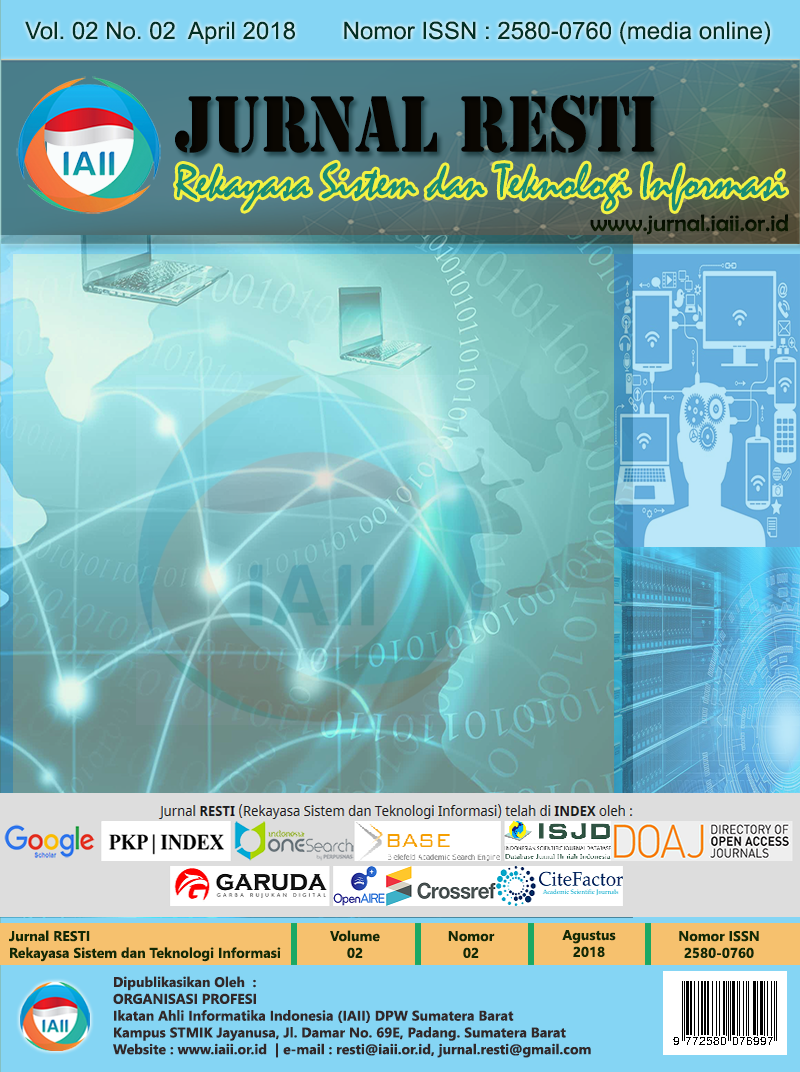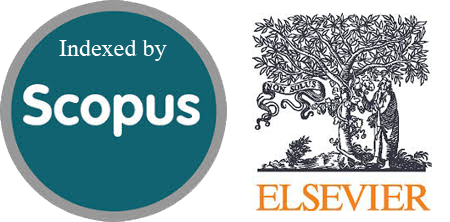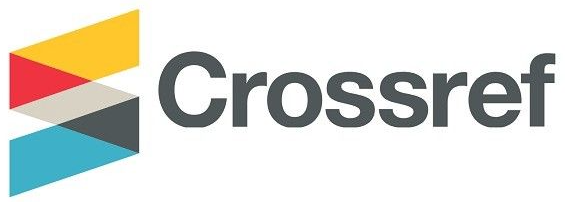Prediksi Hasil Ujian Kompetensi Mahasiswa Program Profesi Dokter (UKMPPD) dengan Pendekatan ANFIS
Abstract
The main objective of this study was to predict the outcome of student's competency exam of the medical profession (UKMPPD) using Adaptive Neuro-Fuzzy Inference System (ANFIS). Data obtained from the Faculty of Medicine Universitas Riau’s student database in 2015 which amounted to 170 data. Input variables were membership status, length of study, and grade point average. Furthermore, the data were analyzed using MATLAB software by setting the number of membership function 2 2 2 and Gbell membership function. The results showed that the method is able to predict the outcome of UKMPPD with Mean Average Percentage Error (MAPE) 0.07%, minimum 0.00%, and maximum 0.44%.
Downloads
References
[2]Indonesia. 2014. Peraturan Menteri Pendidikan dan Kebudayaan : PermendikbudRI/30/2014.
[3]Sunshine, et al., 2015. Factors Affecting the Academic Performance of the Student Nurses of BSU. International Journal of Nursing Science, 5(2), 60-65
[4]Suryakanto., 2010. Faktor-Faktor Yang Mempengaruhi Prestasi Belajar Pada Mahasiswa Angkatan 2007 Fakultas Kedokteran Universitas Katolik Indonesia Atma Jaya. Skripsi. Universitas Katolik Indonesia Atma Jaya.
[5]Ferguson, et al., 2002. Factors associated with success in medical school: systematic review of the literature. BMJ. 324. 952–7
[6]Zuviria, et al., 2012. SAPM: Anfis Based Prediction Of Student Academic Performance Metric. IEEE. 1-6.
[7]Rusli, NM., 2008. Predicting Students’ Academic Achievement: Comparison between Logistic Regression, Artificial Neural Network, and Neuro-Fuzzy. IEEE. 1-6.
[8]Hung, D., Fung, C., 2013. A Comparative Study of Hierarchical ANFIS and ANN in Predicting Student Academic Performance. WSEAS. 10(12). 396-405.
[9]Sari, I., Sri H., 2008. Sistem Pakar & Pengembangannya. Yogyakarta: Penerbit Graha Ilmu.
[10]Sutojo, Edy M., Vincent, S., 2011. Kecerdasan Buatan. Yogyakarta: Penerbit Andi.
[11]Muslimin., 2015. Peramalan Beban Listrik Jangka Menengah Pada Sistem Kelistrikan Kota Samarinda. Jurnal Ilmiah Teknik Industri. 14(2). 113-121.
[12]Sri, K., Sri, H., 2010. Neuro-Fuzzy Integrasi Sistem Fuzzy dan Jaringan Syaraf. Yogyakarta: Penerbit Graha Ilmu.
[13]Widodo, B., Derwin, S., 2014. Artificial Intelligence. Yogyakarta: Penerbit Andi.
[14]Dwi, O., Risanuri, H., Bimo, S., 2014. Diagnosis Penyakit Pasien Menggunakan Sistem Neuro Fuzzy Berbasis Sistem Informasi Rekam Medis dan Pemeriksaan Laboratorium. Seminar Nasional Teknologi Informasi dan Komunikasi.
[15]Sarjon, D,. 2013. Perkiraan Beban Listrik Jangka Pendek Dengan Metode Adaptive Neuro Fuzzy Inference System. Jurnal Ilmiah Saintikom. 12(3). 165-176.
Copyright (c) 2018 Jurnal RESTI (Rekayasa Sistem dan Teknologi Informasi)

This work is licensed under a Creative Commons Attribution 4.0 International License.
Copyright in each article belongs to the author
- The author acknowledges that the RESTI Journal (System Engineering and Information Technology) is the first publisher to publish with a license Creative Commons Attribution 4.0 International License.
- Authors can enter writing separately, arrange the non-exclusive distribution of manuscripts that have been published in this journal into other versions (eg sent to the author's institutional repository, publication in a book, etc.), by acknowledging that the manuscript has been published for the first time in the RESTI (Rekayasa Sistem dan Teknologi Informasi) journal ;







